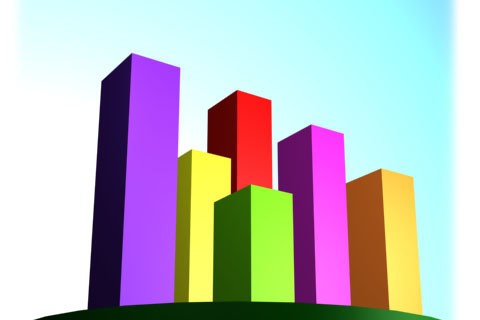When presenting information in a meeting, a picture does paint a thousand words. You can talk about numbers and percentages until you are blue in the face yet not everyone will get what you’re saying. It’s as if you were speaking an alien language. However, once you start putting up a chart or graph, suddenly all your ramblings make sense. It’s like manna from heaven.
Apart from letting your audience understand what you’re trying to communicate, graphs can make it easier for you to explain what you have to say. Keep in mind, though, that you are only as good as your tools. So here are some ways you can use graph and charts effectively:
Choose the right type of graph/chart to use
First off, you have to understand that there are different types of graphs and charts. You can use any of them according to the information that you are presenting. The circle graph (or pie chart), for one, is commonly used to divide data into separate sections.
The bar graph (or bar chart), on the other hand, displays either horizontal or vertical rectangular bars that have lengths corresponding to the values they represent. Another type is the area or line chart, which shows a number of data points interconnected by a line.
Different chart types are suited for different purposes. Line charts, for example, are great for plotting relationships while pie charts are the best types for communicating proportion. Selecting the right graph can make a difference in getting your message across.
Mind the design details
After selecting the right type of graph, think about the design and how it can enhance your presentation. Every design detail must support your points and not detract from the information. Your chart should be focused on the data with your axes being labeled properly. Keep in mind that your goal is to have your audience pick up the data you are trying to share with as little effort as possible.
Be creative
You are free to modify your graph or chart any way you want, as long as it won’t look messy, distracting, and incoherent. If you don’t feel like using labels, why not use custom icons instead? Another interesting way of creating charts is by using a photo of real objects in place of illustrated ones. For instance, imagine using the picture of an actual pie for your pie chart.
If you are a little conservative about the design, there are still some ways to make your graphs stand out. For example, you may think about using different textures in place of solid colors. Wood, for example, would look great for bar graphs. You can also make your chart look three-dimensional by giving it some depth.
For maximum impact, create your graphs using high-end design software such as Adobe Illustrator. Apart from making your presentation look great and comprehensible, it also offers flexibility and excellent usability. With Illustrator, you can create that 3D effect and manipulate the chart pieces with ease.
References
“4 Rules for Boosting Your Creativity.” SlideGenius, Inc. August 12, 2013. Accessed April 21, 2014.
“Graphs and Charts.” Skills You Need. Accessed April 21, 2014.









